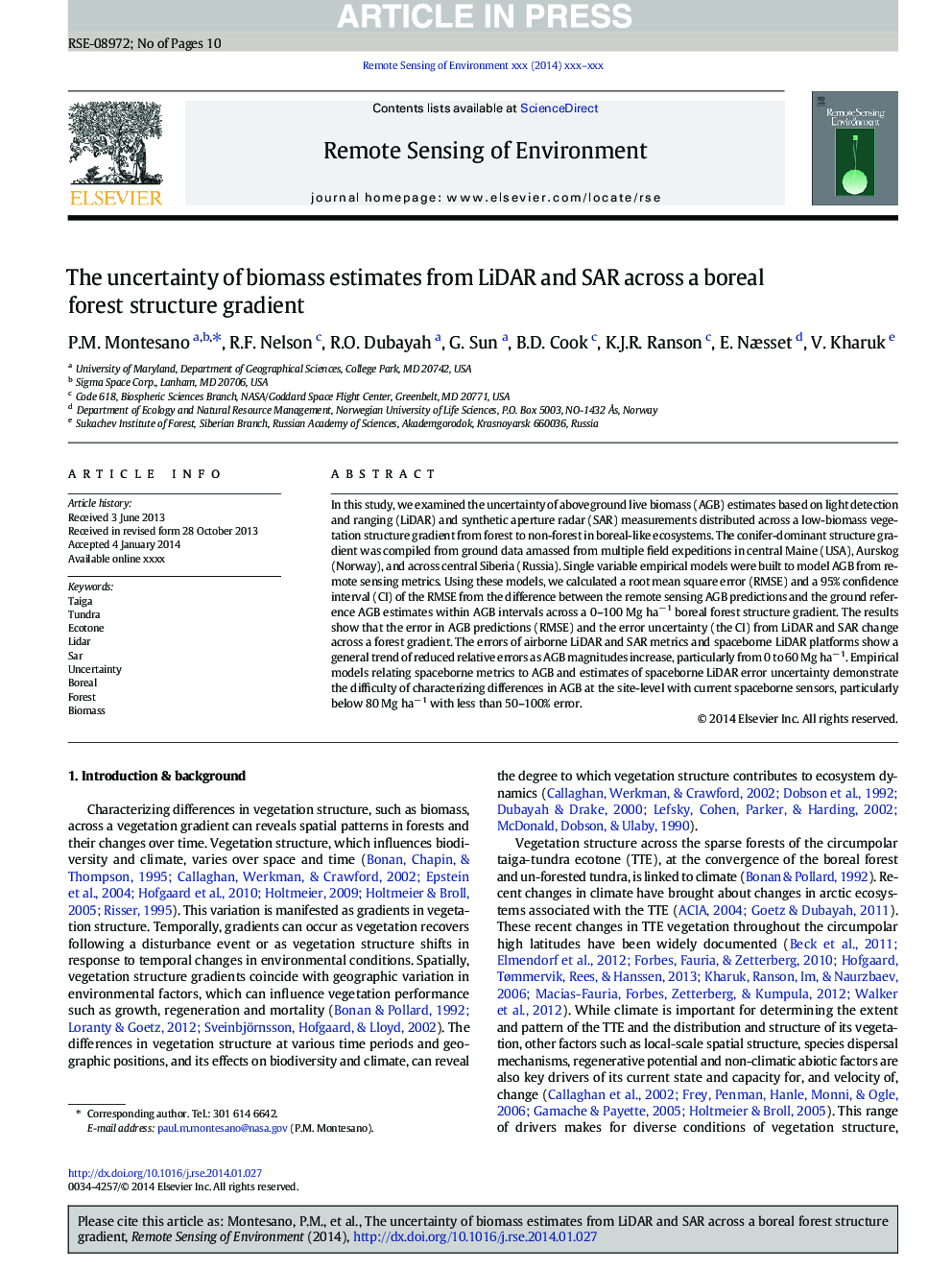| Article ID | Journal | Published Year | Pages | File Type |
|---|---|---|---|---|
| 6346465 | Remote Sensing of Environment | 2014 | 10 Pages |
Abstract
In this study, we examined the uncertainty of aboveground live biomass (AGB) estimates based on light detection and ranging (LiDAR) and synthetic aperture radar (SAR) measurements distributed across a low-biomass vegetation structure gradient from forest to non-forest in boreal-like ecosystems. The conifer-dominant structure gradient was compiled from ground data amassed from multiple field expeditions in central Maine (USA), Aurskog (Norway), and across central Siberia (Russia). Single variable empirical models were built to model AGB from remote sensing metrics. Using these models, we calculated a root mean square error (RMSE) and a 95% confidence interval (CI) of the RMSE from the difference between the remote sensing AGB predictions and the ground reference AGB estimates within AGB intervals across a 0-100 Mg haâ 1 boreal forest structure gradient. The results show that the error in AGB predictions (RMSE) and the error uncertainty (the CI) from LiDAR and SAR change across a forest gradient. The errors of airborne LiDAR and SAR metrics and spaceborne LiDAR platforms show a general trend of reduced relative errors as AGB magnitudes increase, particularly from 0 to 60 Mg haâ 1. Empirical models relating spaceborne metrics to AGB and estimates of spaceborne LiDAR error uncertainty demonstrate the difficulty of characterizing differences in AGB at the site-level with current spaceborne sensors, particularly below 80 Mg haâ 1 with less than 50-100% error.
Related Topics
Physical Sciences and Engineering
Earth and Planetary Sciences
Computers in Earth Sciences
Authors
P.M. Montesano, R.F. Nelson, R.O. Dubayah, G. Sun, B.D. Cook, K.J.R. Ranson, E. Næsset, V. Kharuk,
